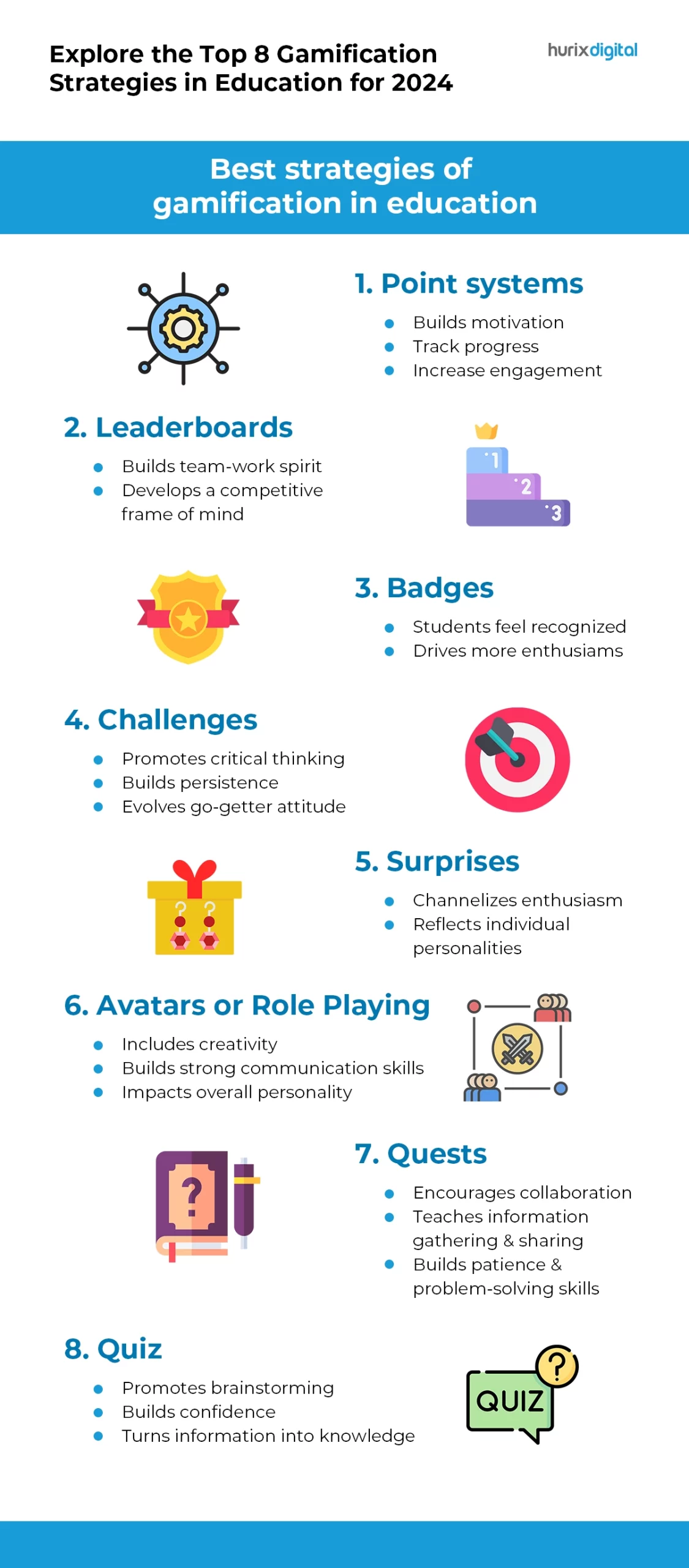Gamification strategies in education are transforming how students interact with lessons. By integrating game-like elements, educators create a more engaging, interactive, and motivating learning experience.
Uncover the future of education with Hurix Digital‘s expertise. Elevate student engagement and learning outcomes with our innovative solutions. Contact us now to know more!

Why Gamification Works in Education
Gamification taps into students’ natural desire for competition, achievement, and rewards. It makes learning more immersive, helping students retain information better. Studies show that gamified learning can boost motivation, improve engagement, and enhance knowledge retention.
Effective Gamification Strategies in Education
1. Point Systems
Assigning points for completing tasks, answering questions, or participating in activities encourages students to stay engaged. Points can be accumulated and redeemed for rewards or recognition.
2. Leaderboards
Displaying student rankings fosters a competitive spirit. It encourages learners to improve performance and strive for higher scores while making progress visible.
3. Badges and Achievements
Awarding digital badges for accomplishments provides a sense of achievement. Badges can be used for skills mastery, completion of levels, or participation in discussions.
4. Challenges and Missions
Presenting tasks as challenges makes learning exciting. These can be individual or team-based, pushing students to solve problems creatively and think critically.
5. Surprise Rewards
Unexpected incentives boost engagement. Teachers can introduce surprise quizzes or bonus points to keep students motivated and alert.
6. Role-Playing and Avatars
Allowing students to create avatars or participate in role-playing scenarios makes learning more immersive. This technique is useful for storytelling, history lessons, and simulations.
7. Quests and Interactive Storylines
Structuring lessons like a game with a storyline keeps students invested. Completing quests requires problem-solving and teamwork, making learning feel like an adventure.
8. Educational Quizzes and Mini-Games
Interactive quizzes reinforce learning while making assessments fun. These can be used for formative assessments, self-paced learning, or classroom competitions.
The Impact of Gamification on Student Learning
Gamification fosters active learning by making content relatable and enjoyable. It increases participation, improves focus, and reduces the fear of failure by encouraging a growth mindset.
Final Thoughts
When implemented effectively, gamification strategies in education can transform traditional learning methods. By incorporating game elements, educators can create a more interactive and rewarding learning experience for students.



